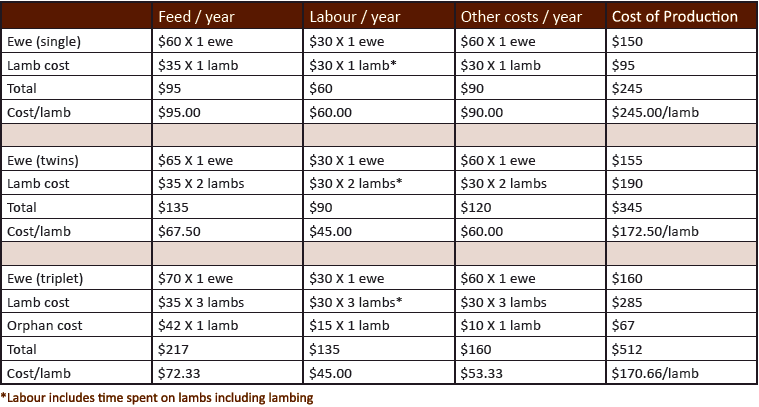| |
Precision Flock Management Flock Snapshot | |
| |
|
|
| |
|
|
| | Technology Offers Advantages
New flock management software has proven invaluable in improving flock productivity. Several programs were evaluated by producers. Financial management software offered more options. Financial managers, accountants and lenders all made sound suggestions.
Being able to collect, retrieve and analyze flock data to manage a flock is a challenge. Pilot project surveys in Alberta found that producers could improve both flock production and financial record-keeping.
What is the Flock Snapshot (FSS)?
As the Alberta Lamb Traceability Pilot (LTP) project worked with participating lamb producers it became obvious there were reasons why determining flock financial performance was difficult. Financial record-keeping is a challenge for many small and mid-size businesses. Standard farm financial records rarely separate the sheep enterprise data from overall farm data. To fine-tune flock management you need sheep specific data. Collecting or analyzing data is difficult so ‘office work’ tends to go to the bottom of the ‘to do’ list. The Flock Snapshot is based on a spreadsheet and further developed to assist producers to analyze flock performance. The FSS pulls together financial and production data to provide a “snapshot in time” of flock performance. This view of flock performance was developed by EBLEX in the United Kingdom. Under the LTP project the Flock Snapshot was adapted to fit lamb production in Alberta. Lamb producers need good records. Agriculture-specific programs are used by more and more farm business managers. Good financial software allows you to focus on the sheep part of your operation. There are also choices in flock production management software that work well for gathering, storing and analyzing flock productivity.
How does the Flock Snapshot work?
Producers enter data from flock financial and production records into the Flock Snapshot. The FSS does all the math calculations. It takes into account key variables that allow you to compare your own flock’s performance from year to year; to set targets for your own flock and then to monitor whether or not the targets were achieved; and finally to compare your flock’s performance to industry averages or benchmarks. Being able to compare your own flock’s performance to industry benchmarks helps you assess how your operation compares to other similar operations. The Flock Snapshot also can help do additional calculations. Being able to do ‘what if’ scenarios helps you evaluate the impact of making a change (like changing feed components based on Sheep Bytes ration balancing) to your operation. Different financial figures can be entered (lower feed costs per marketed lamb) so you can assess the effect of the change on your cost of production. And you can enter different production rates that can impact flock income (higher lambing percentage or more lambs to market). The ‘what if ‘feature of the Flock Snapshot makes calculations so you can assess potential changes to see the impact on your business’ bottom line.
How does the Flock Snapshot help assess flock productivity and financial performance?
Flock and individual ewe productivity has a huge impact on flock Cost of Production (COP) and financial performance. Ewe productivity is based primarily on: conception rate, ewe prolificacy and lamb survival rate. Generally, as ewe productivity goes up COP goes down as there are more lambs to cover the fixed costs of the operation. The sample projections in the table below show how increasing productivity can affect costs per marketable lamb. The costs are sample numbers based on LTP project data for average Alberta sheep operations.
Effect of Productivity on Cost of Production per Marketable Lamb
ion on
Key production cost areas (data 2009-2012):
- Feed (including grazing) is the largest cost of production.
- Labour is the second biggest cost to lamb operations.
- Investment in infrastructure or equipment can be a significant cost in some operations.
- All other costs include depreciation, supplies, fuel, utilities, veterinary costs, etc.,
Traditional shepherding is changing. Lamb producers are adopting new technology like Radio Frequency Identification (RFID) tags, tag readers, compatible flock management software, electronic scales, sorting and handling equipment as well as software tools and mobile applications. Adopting new flock management tools is helping lamb producers improve how they run their flock businesses.
For more information on flock management:
|
|
| |
|
|
| |
Other Documents in the Series |
|
| |
Precision Flock Management: An Introduction
Technology that can save you money
Precision Flock Management Flock Snapshot - Current Document
Cost of Production Raising Profitable Sheep
Precision Flock Management: Managed Grazing Forge Growth and Intensive Grazing Basics
Precision Flock Management: Managed Grazing When to Open and Close the Gate
Precision Flock Management: Managed Grazing Filling Feed Holes in the Feed Year
|
|
| |
|
|
| |
This document is maintained by Amrit Matharu.
This information published to the web on December 6, 2013.
Last Reviewed/Revised on December 22, 2015.
|
|